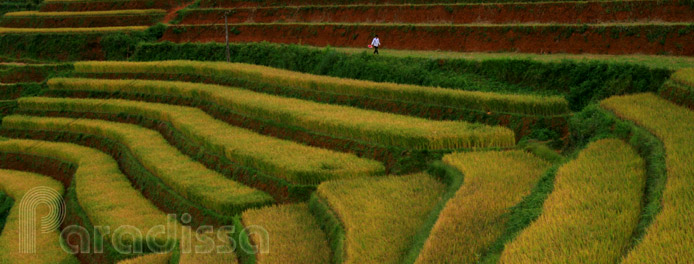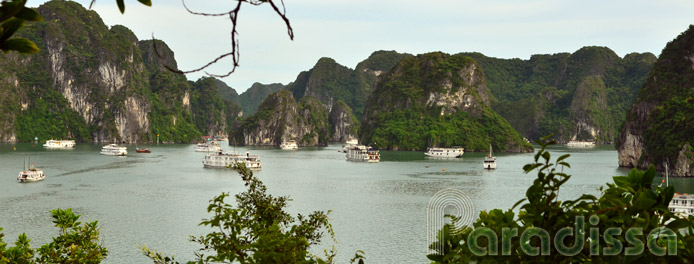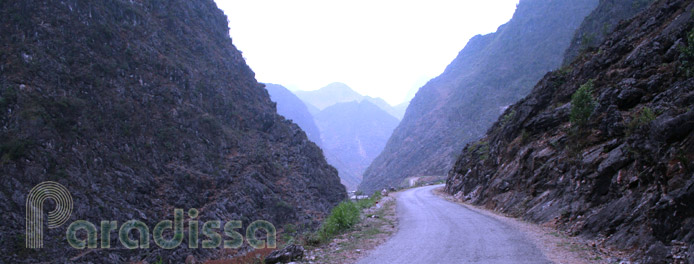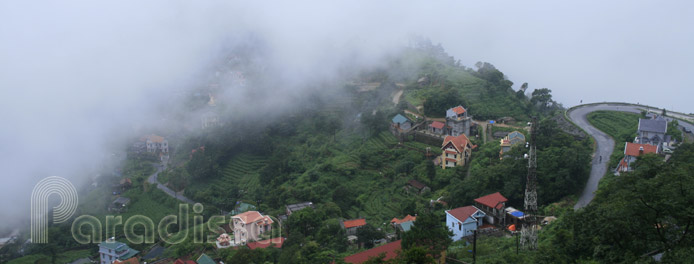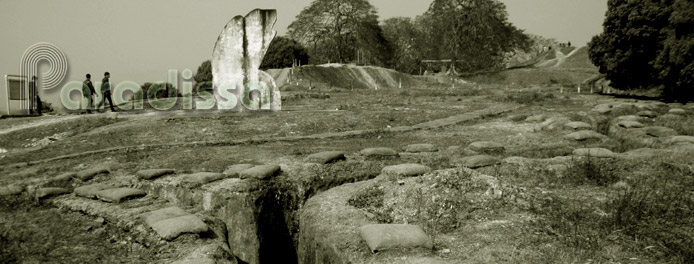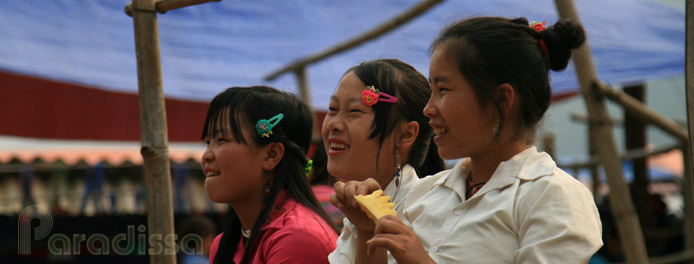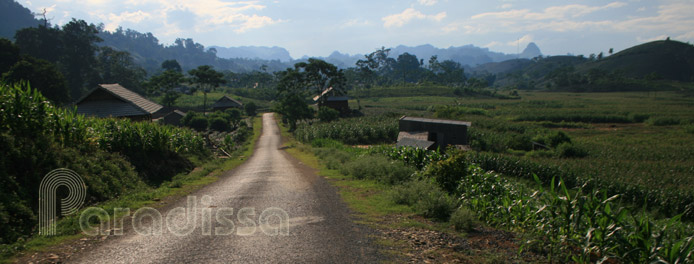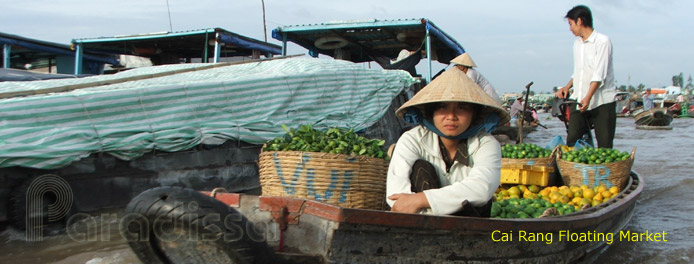Tinh Tay Ninh Holiday Weather today
Date/time of update: April 20, 2025, 1:48 am, Timezone: GMT+7
Overcast Clouds
Temperature: 31.31°C
Temperature feels like: 34.5°C
Minimum Temperature: 31.31°C
Maximum Temperature: 31.31°C
Atmospheric pressure: 1011hPa
Humidity:56%
Visibility: 10000m
Wind speed: 3.87m/sec
Wind Direction: 156 degrees
Cloudiness: 100%
Sunrise: 2025-04-19 10:41:18
Sunset: 2025-04-20 11:06:52
Tay Ninh is where the headquarters of Vietnam’s indigenous religions - Caodaism is located. The Cao Dai Great Temple at the sect’s Holy See is as extraordinary as the sect’s philosophy.
History
Caodaism was founded in 1920 on Phu Quoc Island at a pagoda called Quan Am Tu. It is said that God often revealed himself as a spiritual master called “Cao Dai Tien Ong” and delivered his teachings to a group of people who were interested in spiritualism. In the group there was Ngo Van Chieu or usually known as Ngo Minh Chieu who also was the chief of Phu Quoc Island that time.
At a ceremony on 8-Feb-1921, “Cao Dai Tien Ong” informed that Nguyen Minh Chieu was his first follower. From then on, Ngo Minh Chieu practised day and night the teachings of “Cao Dai Tien Ong” in his own place.
“Cao Dai Tien Ong” also authorized Ngo Minh Chieu to find a symbol for the new religion. Ngo Minh Chieu spent a week, but couldn’t think of anything suitable. One morning Ngo Minh Chieu suddenly saw an eye in front of him. Ngo Minh Chieu was so scared by the glary eye that he prayed. Each time he prayed the eye would fade away. The eye would appear in the next few days until Ngo Minh Chieu decided to choose the eye as the symbol of the new religion. Nowadays the eye as the symbol of Caodaism is described as seen by Ngo Minh Chieu then: the left eye radiating lights.
In 1925 Ngo Minh Chieu moved to Sai Gon where he started his mission to deliver the teachings to new followers. At the end of 1926 Le Van Trung and 28 other people signed the "Declaration of the Founding of the Cao Dai Religion" with a list of 247 signatures of members present at the ceremony.
Philosophy
“Cao Dai” refers to the high palace where God reigns and is used in the religion to refer to God himself in his revelation as a human being (Cao Dai Tien Ong). Caodaism’s philosophy is the fusion of Buddhism, Confucianism, Christianity, Hinduism, Islam, Judaism, Taoism as well as Geniism.
Caodaism believes that in the beginning, there was only God: formless, shapeless, unchangeable, everlasting, and universally powerful and is the origin of all. God divides his spirits into parts which form everything such as earth, universe, plants, animals, human beings... All things have a part of God’s spirit.
A human being has 02 parts: the visible element which is the physical body and the invisible element which is the spirit and soul. The spirit of a human being came from a part of God’s spirit. The soul is to control emotions and to make up characteristics of each person.
Caodai’s philosophy considers that God’s revelation and salvation have experienced 3 periods. In the first one, God inspired to found Judaism, Hinduism and Geniism.
The second period came a few thousand years later in which God led to the foundations of Buddhism, Taoism, Confucianism and Christianity.
Due to the lack of communication and transportation when those religions were founded; and due to the fact that God’s messages were carried indirectly via selected religious leaders combined with the difference in each community which made God’s messages distorted. Human beings as God’s children are more and more different and there’s no peace universally. God decided that this time – The Third Revelation and Salvation - God delivered his own messages to human beings. This time God chose to deliver Caodaism using spiritism means.
Caodaism believes in karma and reincarnation which means a person is reborn many times in the cycle of life. The next life is influenced by deeds practised in this life. More positive karmas lead to better life and in contrast negative karmas lead to more miserable life.
Caodaists practice to fulfill their duties to family, society and humanity. They worship and adore God, venerate Superior spirits and worship their ancestors.
Caodaists worship God (symbolized by the Divine Eye), Sakyamuni (representing Buddhism), Lao Tse (representing Taoism), Jesus Christ (representing Christianity), Confucius (representing Confucianism), Khuong Thai Cong (representing Geniism).
Caodaists venerate Li Tai Pe, (representing Taoism), Quan Am Bo Tat (representing Buddhism) and Quan Thanh De Quan (representing Confucianism) as “the Three Lords of Earth”
Caodaists adore three saints: Sun-Yat-Sen (1866-1925), leader of the Chinese Revolution of 1911; Victor Hugo (1802-1885), French poet and writer; Trang Trinh – Nguyen Binh Khiem (1492-1587), Vietnamese poet and prophet.
Followers are to follow three rules:
Pray at least once per day, at 5-7 AM, noon, 5-7 PM, and/or midnight; at least twice per month at the temple.
Eat from a vegetarian diet at least 6 days per month for the first time and at least ten days each month thereafter
Followers are to observe five interdictions:
Do not kill living beings
Do not be dishonest
Do not commit adultery
Do not get drunk
Do not sin by word
Caodaism’s hierachy has 9 ranks of members: Pope, Censor Cardinal, Cardinal, Archbishop, Bishop, Priest, Student Priest, Subdignitaries and Followers (Adepts). Women are limited to the level of Cardinal and below.
Confucianism’s influence: fulfill three duties (between king and citizen, father and child, husband and wife) and five virtues (humanity, obligation, civility, knowledge, reliability).
There are 2 branches in Caodaism:
Exoterism:
Practice good and avoid evil
Show kindness to humans, other species, plants and nature
Esoterism:
Practice meditation
Practice to eradicate the inferior self and develop the divine element.
Tay Ninh, Travel Guide, Travel and Tourism, Tours and holidays in Tay Ninh
Tay Ninh is 100km northwest of Sai Gon, close to the Cambodian border. The road trip from Sai Gon to Tay Ninh is 2 hours. Many travellers combine the trip to Tay Ninh with the trip to Cu Chi Tunnel. Some travellers visit Tay Ninh on their way to Cambodia. From Sai Gon you can visit Tay Ninh and arrive in Phnom Penh in late afternoon.
At present the tourists normally don't stay overnight in Tay Ninh, but would go back to Sai Gon or Cambodia for the night. There are many local restaurants serving not too good food.
Tay Ninh Average Monthly Rainfall and Temperatures




